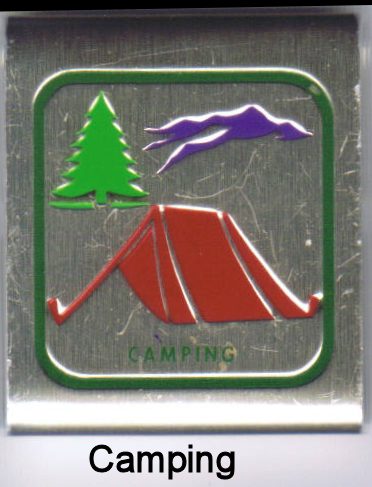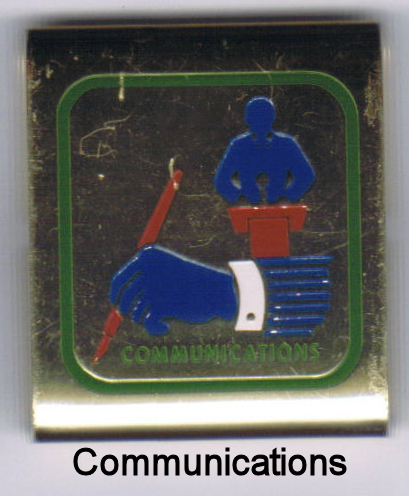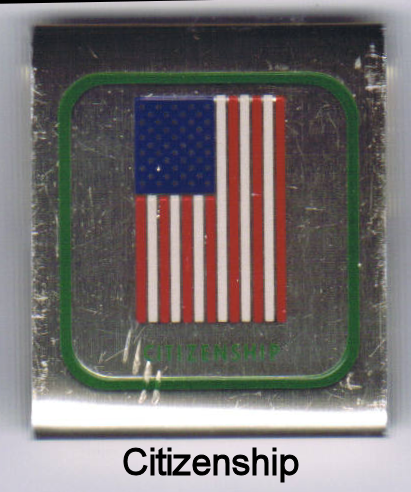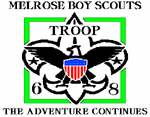 When I was a Boy Scout in the mid 1970’s we needed to earn belt loops called skill awards for the first three ranks. Each skill award was based on a certain set of skills, such as camping, hiking, or swimming. There were twelve belt loops a Boy Scout could earn. The Citizenship Skill Award and one other were required for Tenderfoot. Hiking, First Aid, and one other skill award were required for Second Class. A Scout needed to complete the Camping, Cooking, and one other skill award for First Class rank, in addition to the First Aid Merit Badge.
When I was a Boy Scout in the mid 1970’s we needed to earn belt loops called skill awards for the first three ranks. Each skill award was based on a certain set of skills, such as camping, hiking, or swimming. There were twelve belt loops a Boy Scout could earn. The Citizenship Skill Award and one other were required for Tenderfoot. Hiking, First Aid, and one other skill award were required for Second Class. A Scout needed to complete the Camping, Cooking, and one other skill award for First Class rank, in addition to the First Aid Merit Badge.
When I became a Scoutmaster in 1981 it was easy to use the twelve skill awards as monthly themes for the younger Scouts. Twelve awards, twelve themes. It worked well. Then, in the mid 1980’s, the National Office decided that skill awards would be discontinued and new rank requirements would be created. I hated to see the belt loops dropped from the program, but we had to move on and follow the new “improved” advancement program.
I thought it might be fun to look back at these old awards and what the requirements of each one were at the time. So today, I start with the Camping Skill Award.
1) Present yourself to your leader, properly dressed, before going on an overnight camping trip. Show the camping gear you will use, including shelter and food. Explain how you will use the gear. Show the right way to pack and carry it.
2) Go on two overnight camping trips with your troop, patrol, or other Scouts, using the gear. On each overnight camp, do the following:
a) Carry the gear on your back for at least 2 km to your camp. After camping, carry it 2 km back.
b) Pick a good place for a tent. Pitched a tent correctly in the place you picked and sleep in it overnight. Store the tent correctly after use.
c) Make a bed on the ground. Sleep on it overnight.
d) Follow good health, sanitation, and safety practices. Leave a clean campsite.
e) After each trip, tell your leader what you achieved and learned. Tell how good camping practices proved useful.
3) Whip the ends of a rope. Tie the following knots: square knot, sheet bend, two half hitches, clove hitch, taut line hitch, and bowline. Show their correct use.
4) Lash poles together with the following lashings: square, shear, and diagonal. Show their correct use. Use lashing for making a simple camp gadget.
As you can see, all of these requirements are still a part of the Boy Scout advancement program. They have just been broken up into the first three ranks.
 I just wanted to take a moment and congratulate Alex Lloyd and the Dale Coyne Racing team for taking third place at the 2010 Indianapolis 500. Great job guys! To start in the ninth line and move up and take third place was simply awesome! I just wish the telecast would have given you some air time during the race and after the race. I got the feeling that ABC and ESPN were avoiding you.
I just wanted to take a moment and congratulate Alex Lloyd and the Dale Coyne Racing team for taking third place at the 2010 Indianapolis 500. Great job guys! To start in the ninth line and move up and take third place was simply awesome! I just wish the telecast would have given you some air time during the race and after the race. I got the feeling that ABC and ESPN were avoiding you.





 When I was a Boy Scout in the mid 1970’s we needed to earn belt loops called skill awards for the first three ranks. Each skill award was based on a certain set of skills, such as camping, hiking, or swimming. There were twelve belt loops a Boy Scout could earn. The Citizenship Skill Award and one other were required for Tenderfoot. Hiking, First Aid, and one other skill award were required for Second Class. A Scout needed to complete the Camping, Cooking, and one other skill award for First Class rank, in addition to the First Aid Merit Badge.
When I was a Boy Scout in the mid 1970’s we needed to earn belt loops called skill awards for the first three ranks. Each skill award was based on a certain set of skills, such as camping, hiking, or swimming. There were twelve belt loops a Boy Scout could earn. The Citizenship Skill Award and one other were required for Tenderfoot. Hiking, First Aid, and one other skill award were required for Second Class. A Scout needed to complete the Camping, Cooking, and one other skill award for First Class rank, in addition to the First Aid Merit Badge.
